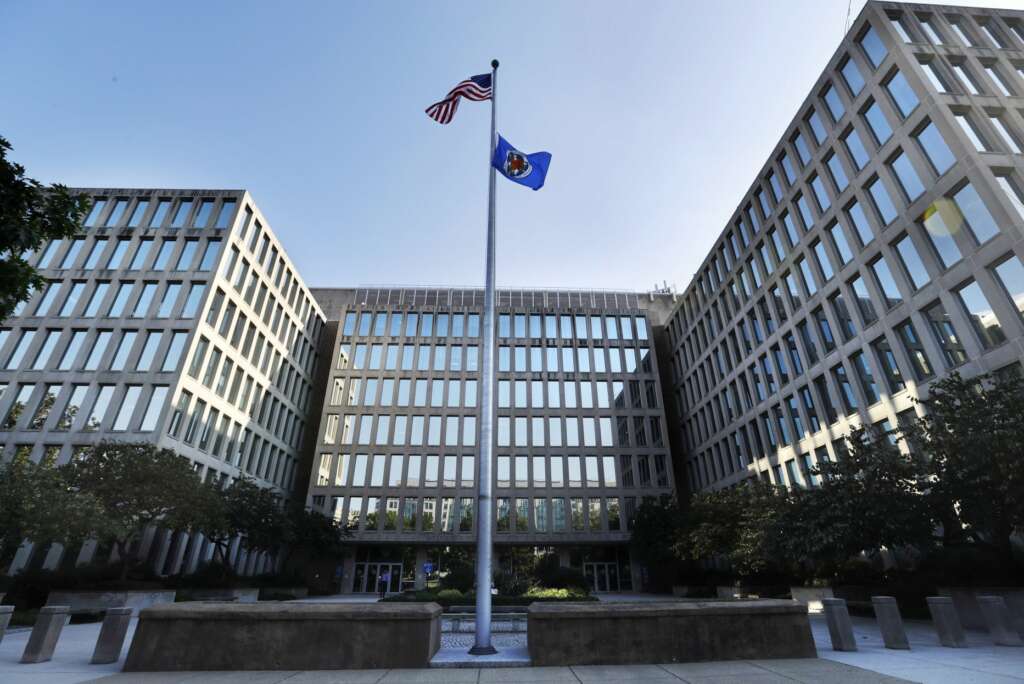ALEXANDRIA, Va. – It’s a 25-mile stretch connecting Quantico, Ft. Belvoir and the Capital Beltway. Now a study is under way to look at U.S. Route 1 from Virginia 123 north to the Beltway.
The Virginia Department of Rail and Public Transit is leading the analysis of the 14-mile stretch in Prince William and Fairfax Counties.
“The congestion is the number one issue on Route 1,” says Amy Inman, Planning and Mobility Programs Administrator at DRPT.
“We’ll look at how many cars are utilizing this roadway. What is it today? What is it anticipated to be out to 2040? We’ll be assessing the various transit alternatives and what the impact of those investments will be on the road,” she says.
According to the Virginia Department of Transportation, between 50,000 and 70,000 vehicles travel the stretch between Quantico Marine Corps Base and Ft. Belvoir each weekday, a figure that has grown since the Base Realignment and Closure plan a few years ago. For example, Ft. Belvoir has more than 30,000 people living or working at the Belvoir Main Post on Route 1/Richmond Hwy. While base officials provide a shuttle bus from the Springfield VRE and Metro stations, some commuters would rather drive on I-395/95 or Route 1 from Woodbridge or Dumfries than deal with the transfer.
“Ft. Belvoir today employs more people than the United States Pentagon. It has on average 64,000 vehicles that goes on and off base everyday. We don’t have a road network to support that,” says State Del. Scott Surovell, D-District 44.
State Senator Toddy Puller, D-District 36, helped get the funding for the study.
“I want to see this study work and come up with several alternatives that we can look at and pick the one that fits our needs,” she says.
Among the options being considered are extending Metro’s Yellow Line from Huntington south, improving VRE, light-rail, bus-rapid transit in bus-only lanes and better pedestrian and bicycle access. The original Metrorail plans in the 1970s included extending the subway to Woodbridge.
Surovell favors the option to extend the Yellow Line.
“Metro has been transformative everywhere it’s been introduced in the DC metro area. And I think it would be transformative here too. I think one of the big lessons learned from the Silver Line is how are you going to pay for it. That is definitely an issue we’re going to have to confront, no matter what we do here,” he says.
Puller doesn’t think Metro would be the best choice.
“I don’t like going in with my mind made up. But I want to know how much Metro will cost. At least at this point, I don’t think we have the density to support Metro,” she says.
Inman says there may not be a one-size fits all approach for the entire stretch from the Capital Beltway to Virginia 123 in Woodbridge. She says there could be a combination of several options on the list, although she understands that the more transfers that commuters have to make, the less appealing transit becomes.
“Modern transit, high-capacity, frequent transit on its own dedicated right-of-way is the key to the revitalization of the Route 1 corridor. It’s a green solution, it’s a smart growth solution and it’s a pro-economic growth solution for the corridor,” says Stewart Schwartz of the Coalition for Smarter Growth.
“This is the study we’ve needed for a long time. So credit has to go Senator Puller, Delegate Surovell and the folks at DRPT for making this happen,” he says.
The Route 1 Multimodal Alternatives Analysis, as it’s formally called, will also explore whether road widening can also help solve the traffic problem.
“The Route 1 corridor (in Fairfax County) has received very little transportation investment in my entire lifetime. I think the last time it was actually widened was in 1971, the year I was born,” says Surovell.
As WTOP has reported, a project to widen Route 1 from Pohick Road to Mt. Vernon Memorial Highway will begin next spring. The Department of Defense is funding the $180 million project that will take three years to complete. The project will include extra right-of-way to implement whichever mass transit option ultimately becomes the preferred option.
DRPT held a public meeting earlier this week and will hold another one in February with residents. A final recommendation could come next summer. Then the question becomes: Will the report collect dust, or will Fairfax and Prince William officials act on the recommendations? If they act, how will they pay for a mass transit option?
Follow @WTOP on Twitter.













